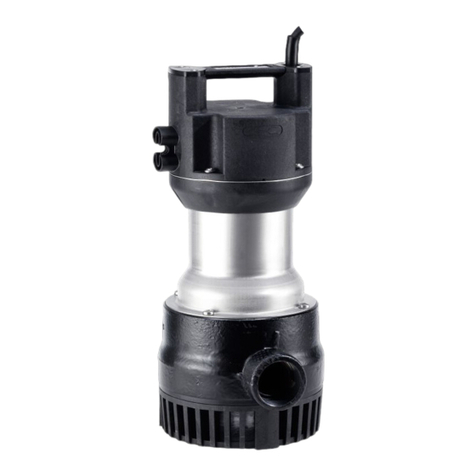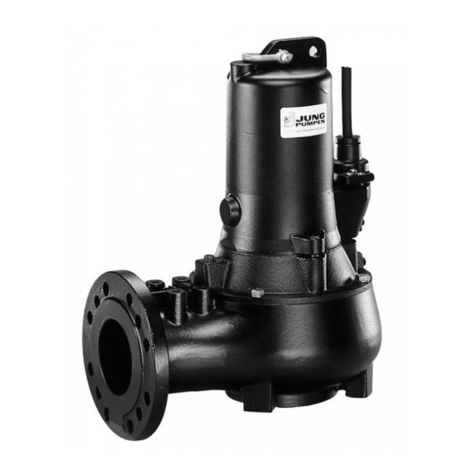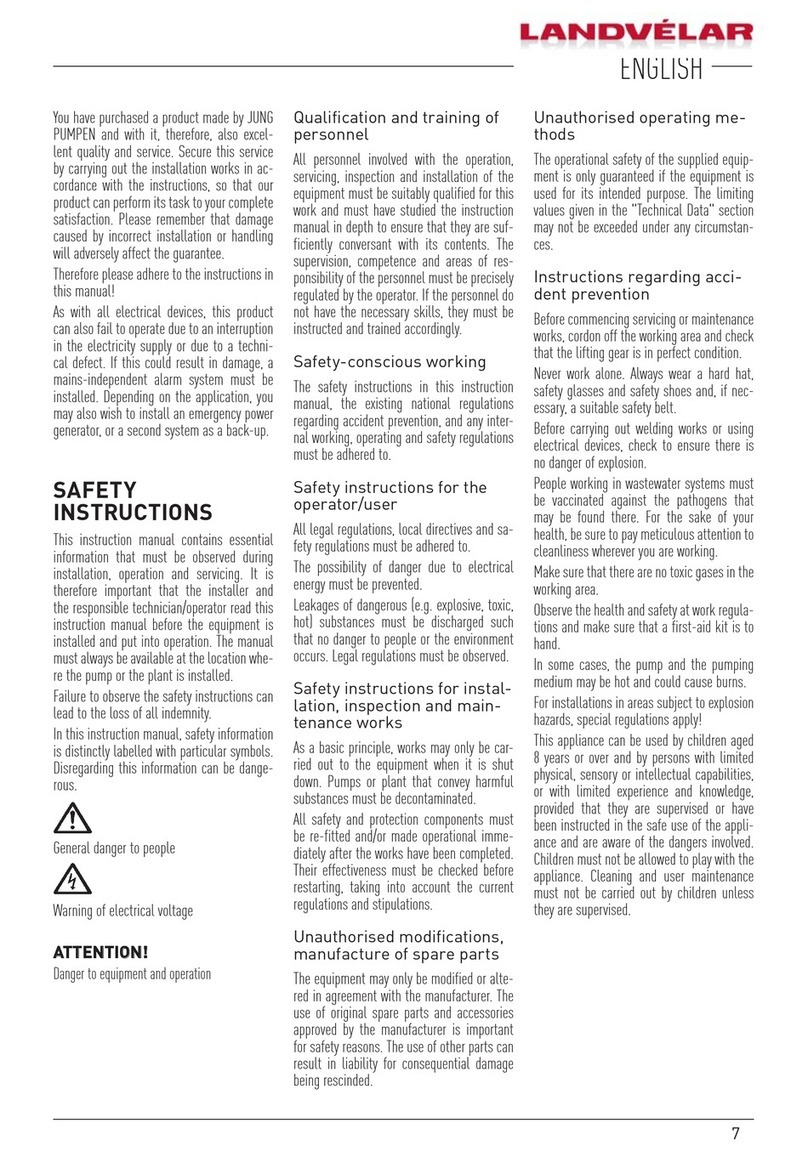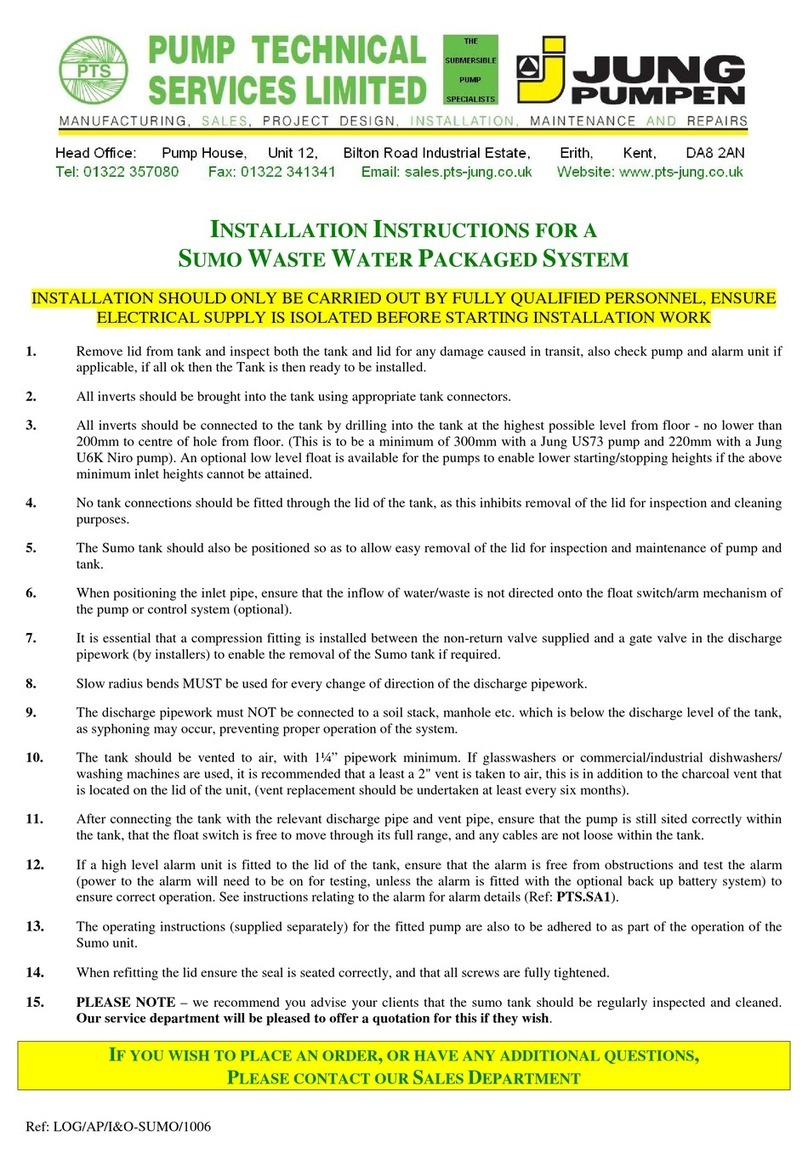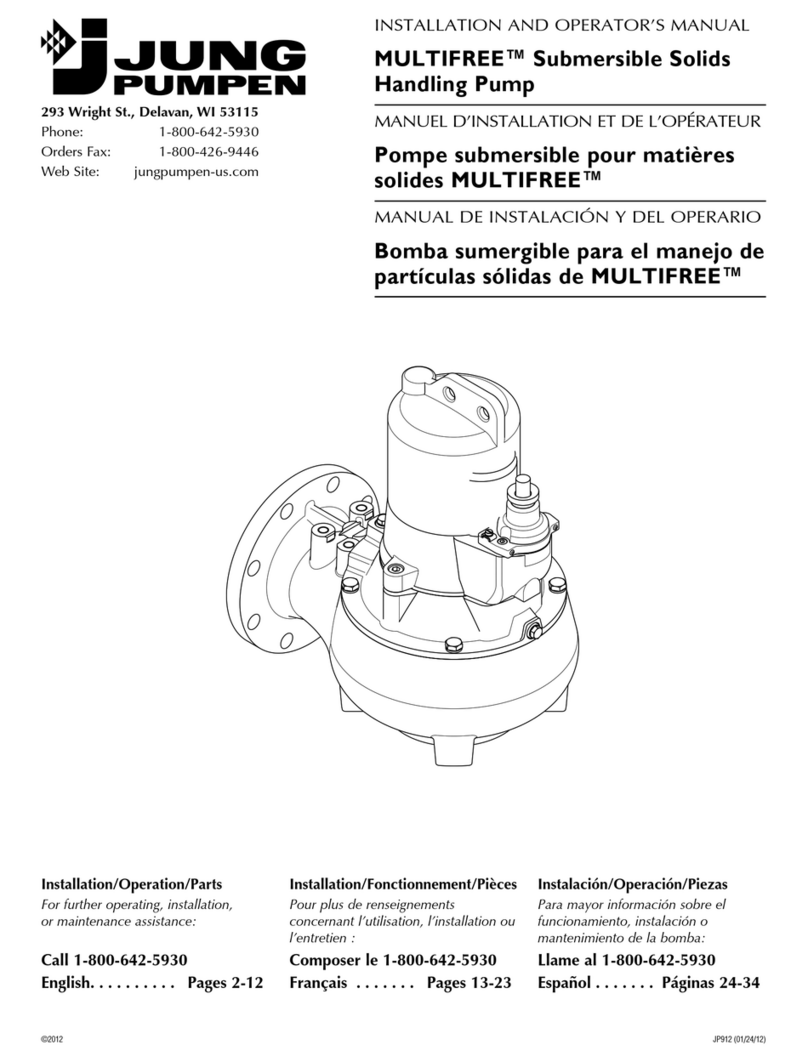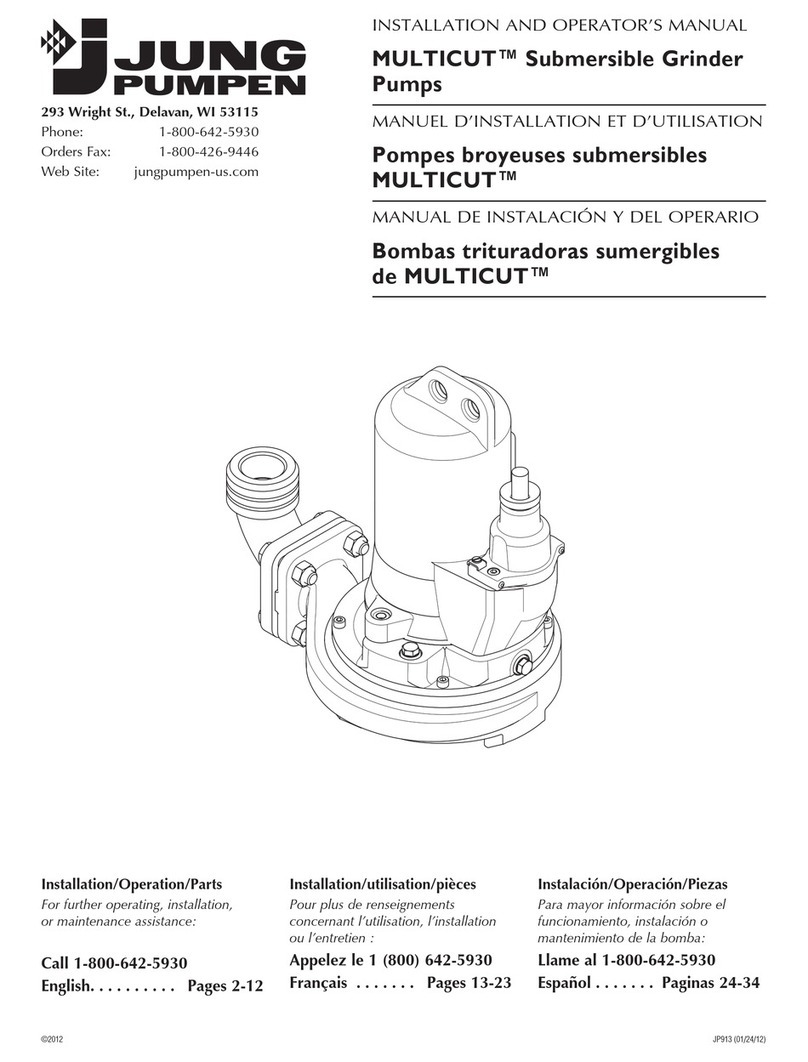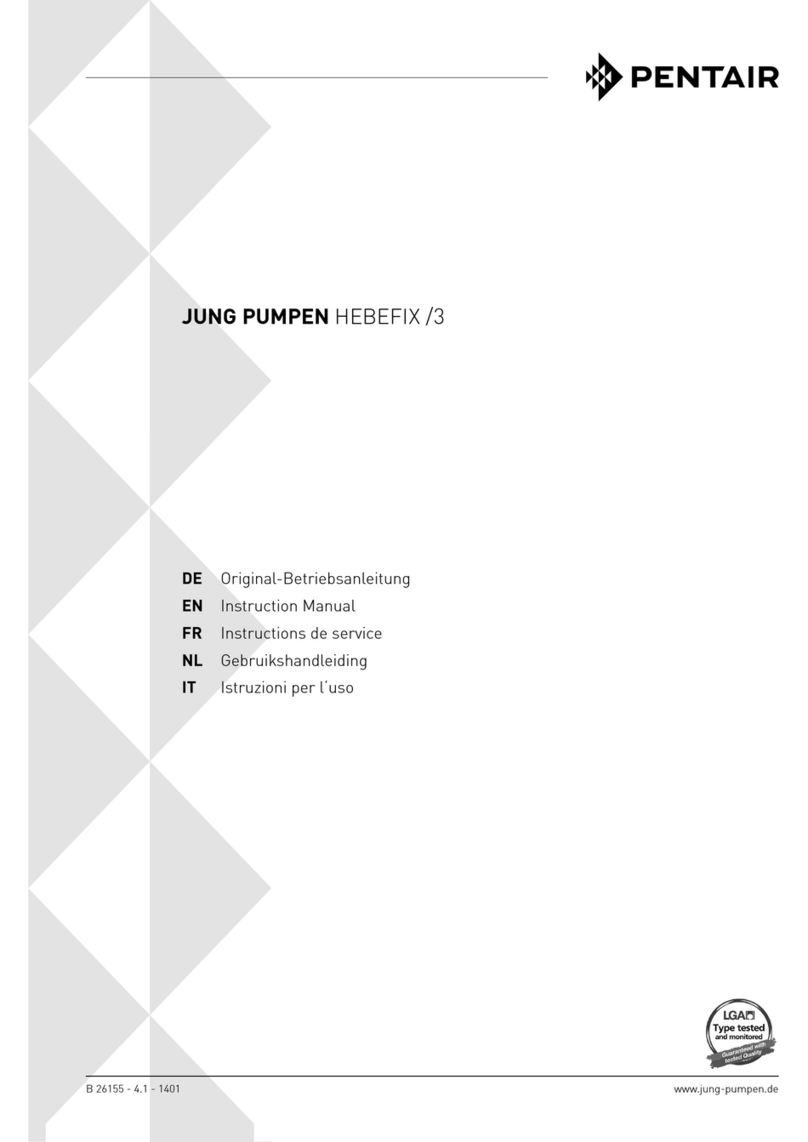
Maintenance 6
For parts or assistance, call Jung Pumpen Customer Service at 1-800-642-5930
Maintenance
Only qualified mechanics with proper tools and
knowledge should attempt to service this pump.
Heavy parts. Use lifting gear of appropriate
capacity positioned directly over lift point(s).
Seal Lubrication
Oil in the seal chamber should be changed after the first
300operating hours, then each 1000 hours thereafter or
annually.Theoilfill/oildrainopeningislabled“OHL”.
After cleaning and sanitizing the pump, drain all oil and
residue into a clean measuring container.
• Iftheoilismilkyinappearance,itiscontaminated
with water. Refill pump with clean, fresh oil, using
amounts and type shown in Maintenance.Checkoil
condition again after 300 operating hours.
• Iftheoiliscontaminatedwithbothwaterand
pollutants, the main seal must be replaced and
the oil changed. Recheck oil condition after
300operating hours.
NOTICE: Whenever the main seal is being serviced,
remove oil and replace with new oil at reassembly. Use
only HLP hydraulic mineral oil, viscosity class 22 to
46(Spinesso or Nuto, from ESSO).
The filling quantity is shown in Product Specifications.
NOTICE: Fill oil reservoir with the exact quantity of oil
specified. The pump will become inoperable if overfilled.
Cleaning the Impeller
Hazardous voltage, hazardous cutter, and
possible unexpected starts.
Disconnect the electrical
power and keep your hands away from the pump inlet
opening when working on or handling the pump for any
reason. Do not use automatic reset controls with this pump.
1. Disconnect the electrical power supply.
2. Disconnect the discharge piping (this step is not
necessary if you have a guide-rail lift-out system).
3. Hoist the pump out of the pit using the lift-out
system or the lifting chain (not the cord) and place
the pump in a suitable area where it can be cleaned.
4. Removeallscaleanddepositsfromthepump.Check
visual appearance of all pump housing screws and
mating surfaces. Tighten any loose fasteners.
Risk of infection from pathogens (such
as hepatitis) which can collect on pump during
normal operation. Submerge the complete pump in
a disinfectant solution (dilute chlorine bleach) for at
least one hour before disassembly.
5. Unscrew four 5 mm Allen screws attaching the
volute and remove the volute casing. It may be
necessary to tap around the parting line with a lead
or rawhide hammer to loosen the casing.
Wear protective gloves. Worn impellers
can have sharp edges that could cut or scratch.
6. Carefullycleantheimpellerandvolutesurfaces.
Inspect for obvious cracks or damage.
7. Reverse step 5 to reassemble the pump.
Impeller Replacement
1. Remove four 5 mm Allen screws that attach the
volute and remove the volute casing. It may be
necessary to tap around the parting line with a lead
or rawhide hammer to loosen the casing.
Wear protective gloves. Worn impellers
can have sharp edges that could cut or scratch.
2. Wedge the impeller with a piece of wood and
loosen the central impeller screw located in the
impellerhub.
3. Loosen the impeller by striking it gently with a lead
or rawhide hammer, then slide it off the motor shaft.
4. Cleanallexposedsurfaces,includingmotorshaft.
5. Greasetheshaftcoverontheinside.DONOTuse
grease containing graphite (like Molykote).
6. Assemble all impeller-mounting components and
tighten finger tight.
7. Slide a new impeller over impeller mount.
8. Set impeller-to-motor housing gap (X) to .007”
(2mm). See Figure 6.
9. Block impeller with a piece of wood and tighten
central impeller screw to 48 ft-lb (65 Nm).
10. Attach motor unit to volute casing. Finger tighten
four 5 mm Allen screws, then torque each to
5.9ft-lb (8 Nm). The cable entry point is opposite the
discharge opening.
X
Figure 6: Impeller clearance
